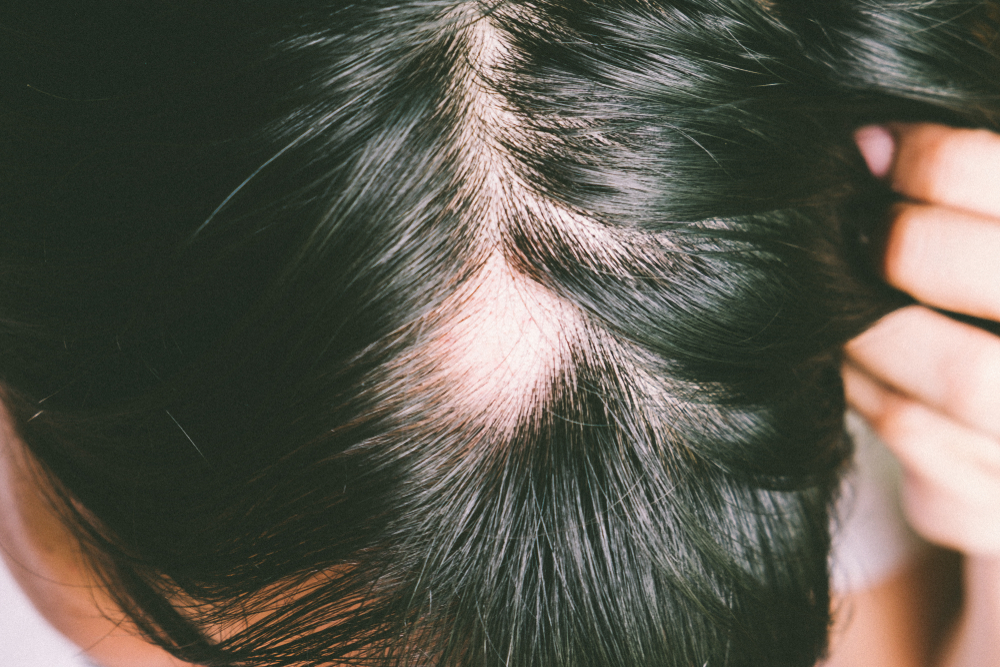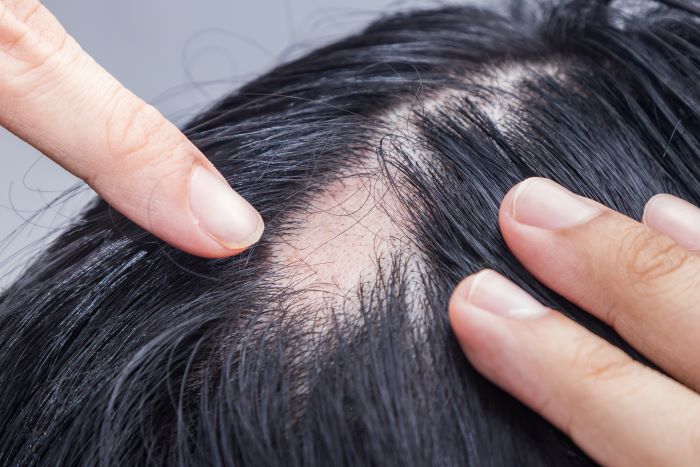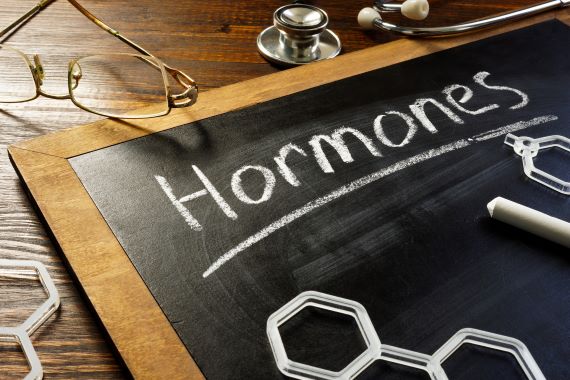The unpredictable nature of alopecia areata, a disorder marked by sudden hair loss in regions, makes treatment difficult. There is a continuous search for efficient treatments, with topical remedies and more sophisticated therapies among the alternatives. Platelet-Rich Plasma (PRP) therapy has become a viable method for combining dermatological care with regenerative medicine. To effectively manage alopecia areata, people must investigate all available treatment options, including PRP, and comprehend the underlying reasons for the condition. Let’s discuss PRP and alopecia areata along with the other effective treatments.
Alopecia Areata Causes

- Autoimmune Response: The body’s immune system mistakenly targets and attacks hair follicles.
- Genetic Predisposition: The risk is increased by a family history of autoimmune illnesses such as alopecia areata.
- Environmental Triggers: The illness may start or worsen due to exposure to specific environmental variables.
- Stress: Stress is usually identified as a trigger for the onset of symptoms, even though it is not a direct cause.
- Hormonal Changes: Hormonal changes may be relevant, especially when they occur along with other conditions.
Alopecia Areata Symptoms
- Patchy Hair Loss: One or more round or oval bald patches that emerge suddenly on the scalp are the most typical sign.
- Hair Loss in Other Areas: Beards, eyebrows, and eyelashes are among the other body areas where hair loss can occasionally occur.
- Exclamation Mark Hairs: Usually found around the borders of bald patches, these hairs taper at the base and get narrower closer to the scalp.
- Tingling or Itching in the Scalp: Some persons report a mild tingling or itching in the afflicted areas before hair loss.
- Nail Changes: Alopecia Areata can sometimes affect the nails, leading to pitting, white spots, and roughness on the nails.
5 Best Alopecia Areata Treatments to Recover Fast
Platelet-Rich Plasma (PRP) Therapy
PRP therapy involves extracting a patient’s blood, processing it to concentrate the platelets, and then reinjecting it into the scalp. Platelets contain growth factors that can stimulate hair follicles and promote regrowth. PRP is gaining popularity due to its natural approach and minimal side effects, though more research is needed to confirm its effectiveness for alopecia areata.
Topical Corticosteroids
These are topically applied anti-inflammatory lotions or ointments for bald areas. Corticosteroids lessen inflammation and stop hair loss by suppressing the skin’s immunological response. Although they can take several weeks to show benefits, they are frequently used as first-line therapies, especially for mild cases. Using them under medical supervision is important because prolonged usage might cause adverse effects, such as skin thinning.
Intralesional Corticosteroid Injections
This treatment involves injecting corticosteroids directly into the bald patches to suppress the local immune response. The injections are usually given by a dermatologist every 4-6 weeks. They can be more effective than topical treatments for some patients, especially for more extensive hair loss. Pain and skin atrophy at the injection site are potential side effects.
Minoxidil (Rogaine)
Initially used for treating high blood pressure, Minoxidil is commonly used to stimulate hair growth. It is applied topically and is FDA-approved for treating pattern baldness, but it is also used off-label for alopecia areata. It can encourage hair regrowth in the affected areas but requires consistent, long-term use for maintenance. It’s most effective when used in combination with other treatments.
Immunotherapy
This involves applying chemicals like diphencyprone (DPCP) to the skin to provoke an allergic rash. The rash alters the immune response and can stimulate hair growth. However, it requires regular, repeated applications and can cause side effects like severe dermatitis or unwanted hair growth in nearby areas.
Alopecia Areata Treatment Aftercare
- Follow Your Dermatologist’s Instructions: After receiving treatment, it’s crucial to adhere strictly to the care plan prescribed by your dermatologist. This includes applying medications as directed and attending follow-up appointments to monitor progress.
- Gentle Hair Care: Use mild shampoos and avoid harsh hair treatments like coloring or perming. Gentle hair care reduces irritation and stress on the hair follicles, aiding recovery.
- Avoid Direct Sunlight on Treated Areas: If you’ve had treatments like steroid injections or topical immunotherapy, protect the treated scalp areas from excessive sun exposure to prevent irritation or sensitivity.
- Manage Stress: Stress management can be beneficial, as stress may exacerbate alopecia areata. Techniques like meditation, yoga, or counseling can help in reducing stress levels.
- Reduce Hair Styling and Heat: As heat-applying appliances and products, such curling irons and straighteners, can aggravate the scalp and cause additional damage to hair, reduce their use.
- Avoid Scratching the Area: Try not to scratch or rub the treated area, even if it itches, since this might irritate the skin and interfere with the healing process.
- Healthy Diet: A healthful diet Keep up a healthy, vitamin- and mineral-rich diet to promote hair development. Particularly advantageous foods include those that are high in protein, iron, zinc, and omega-3 fatty acids.








